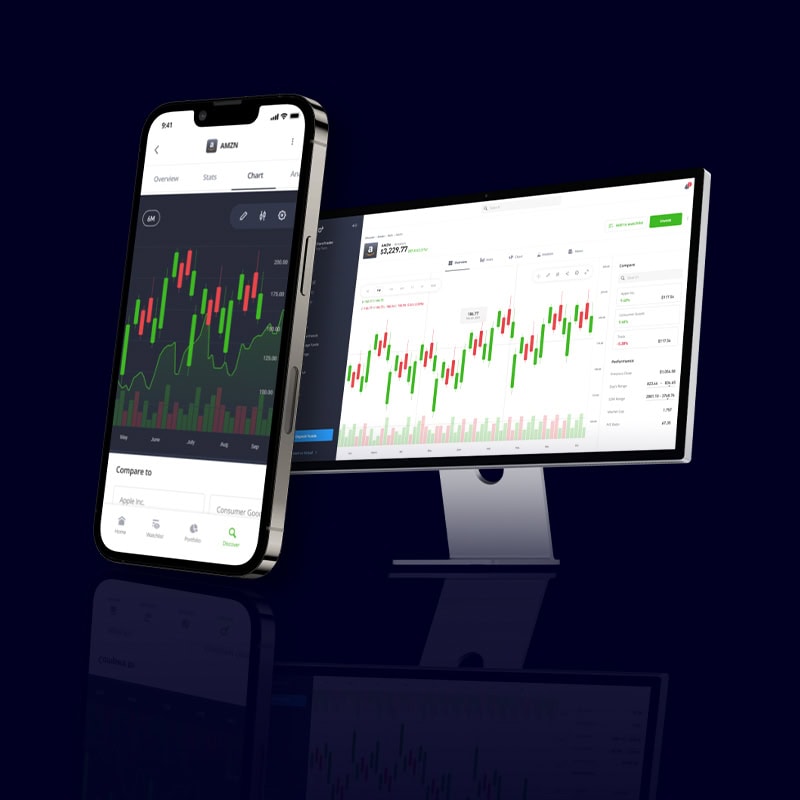If you are an experienced trader, you are probably already familiar with CFD trading. That’s because many popular investment strategies would be far more complicated, if not outright impossible, without utilising CFDs.
For Jose Angel Zabalegui Labarta from Spain, who has years of experience in his professional career as an investment manager, CFDs play an integral role in his trading. “CFDs are an important tool, and necessary for replicating professional investment strategies like those used at a bank’s trading desk,” he says. Jose is also a leading investor on eToro’s social investing platform. Known as Popular Investors, these elite traders help to guide their followers to potentially profitable investments, earning extra income when they succeed.
Ready to take your trading to the next level?
Turn your trading into a business
Copy trading does not amount to investment advice. The value of your investments may go up or down. Your capital is at risk.
“Professional investment strategies using CFDs require access to diverse asset types while allowing for hedging and directional investing, and the application of clear and easy-to-use risk-management tools,” Jose adds.
Let’s look at some of the different types of CFD trading strategies every experienced investor needs to know about, along with the tools they require to be successful.
Day trading
Also known as intraday trading, this popular short-term strategy involves opening and closing a number of CFD trades all within the same day. Day traders are just that — they prefer not to hold a position overnight, but rather move quickly in and out of highly liquid and volatile assets.
Day trading requires a lot of experience and very precise execution. Since the focus is on profiting from a small change in prices with rapid trades during the trading day, day traders must make quick decisions, relying heavily on technical indicators to identify patterns in the markets and find the best entry and exit points.

Pro tip: Analyse like a pro with ProCharts! This powerful tool offers all of the most popular technical indicators for in-depth yet at-a-glance analysis. You can easily customise the trading interface to get the precise technical analysis you need across thousands of assets. Watch the tutorial here.
Watch now:
5 things experienced investors don’t know about eToro
81% of retail investor accounts lose money when trading CFDs with this provider. You should consider whether you can afford to take the high risk of losing your money.
News trading
Current events and other news greatly influence the financial markets, and with up-to-the-millisecond information readily accessible to all, news trading is more popular than ever. This strategy is based on anticipating market reactions to economic releases, corporate announcements and geopolitical events. News traders must identify upcoming trading opportunities, open long or short CFD positions at just the right time, and then close them when peak momentum is reached.
News trading requires knowledge of the different types of news and how they can impact price movements, as well as staying constantly informed on both scheduled and unscheduled newsworthy events.
Pro tip: The eToro news feed is an incredible tool for staying informed. You’ll see all of the latest updates on everything that’s happening to affect an asset, plus analyst recommendations, links to news articles, and real-time sentiment of millions of users from all over the world. And don’t forget to check the eToro Economic Calendar and Earnings Reports Calendar for scheduled market events.
Ready to trade CFDs on eToro?
81% of retail investor accounts lose money when trading CFDs with this provider. You should consider whether you can afford to take the high risk of losing your money.
Hedging
Hedging allows traders to offset the risk of negative price movements in a volatile market. When using a long/short hedging strategy, a trader opens a short (sell) CFD position that runs opposite to a long (buy) position already held in their portfolio. The short (sell) position is simply meant to reduce risk exposure and counterbalance anticipated loss.
Pairs trading is another popular CFD hedging strategy, which involves trading two different, but historically correlated assets — opening one long position and the other short. The pairs trader attempts to capitalise on a temporary market imbalance between the two (or sometimes more) assets, in anticipation of making money when the imbalance is corrected.
Pro tip: Integrating short selling into your investment strategy can be particularly useful during inevitable downturns and bear markets, to hedge or to further diversify your portfolio and reduce risk.
Position trading
Unlike the other strategies listed here, whose goals are short-term, position trading focuses on macroeconomic trends and wider market movements that are likely to be profitable in the relative long term. A position is opened and held for months or even years, ignoring short-term volatility and everyday price fluctuations. While this sounds like the usual buy-and-hold, the difference is that the position trader’s main goal is to exploit a particular market trend. When the trend peaks — whenever that may be — it’s time to close out the position.
Although CFDs are not traditionally thought of as a long-term investment tool, they can be used to great effect in position trading, since CFD trading allows for leverage. Using leverage enables the trader to gain the desired exposure of the position without having to tie up as much capital long term.
Pro tip: Join the eToro Club and you’ll always have leading investment experts at your service — free of charge! Get insights into the latest market trends with live webinars, one-on-one consultations, and premium access to exclusive financial content, all included with eligible membership.
Put your strategy into practise
Which of these strategies sounds right for you? Start implementing them now — you can even practise risk-free in a demo account before trading with real money. And don’t forget to use effective risk management tools to help protect your capital.
Get started now
81% of retail investor accounts lose money when trading CFDs with this provider. You should consider whether you can afford to take the high risk of losing your money.



